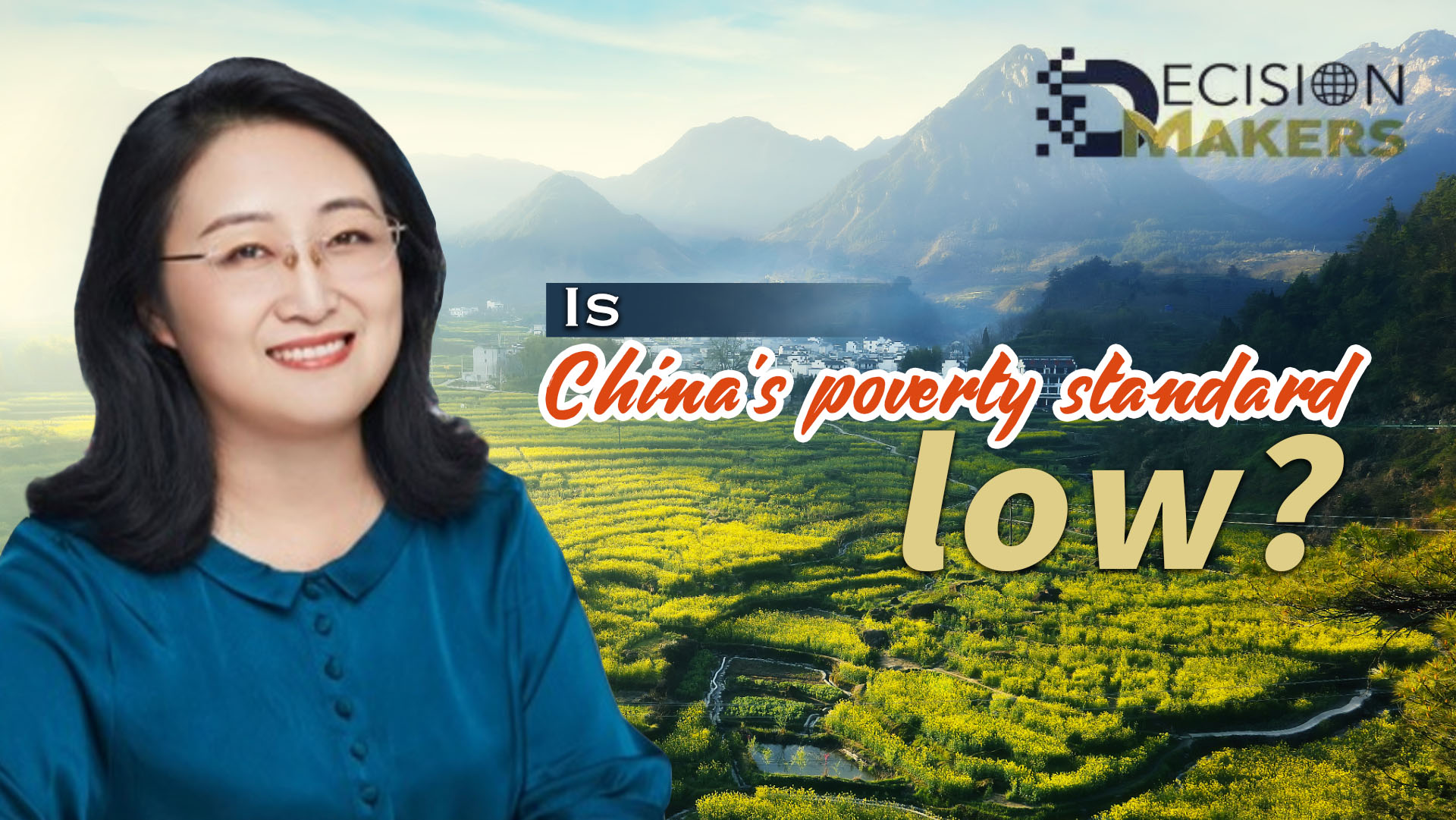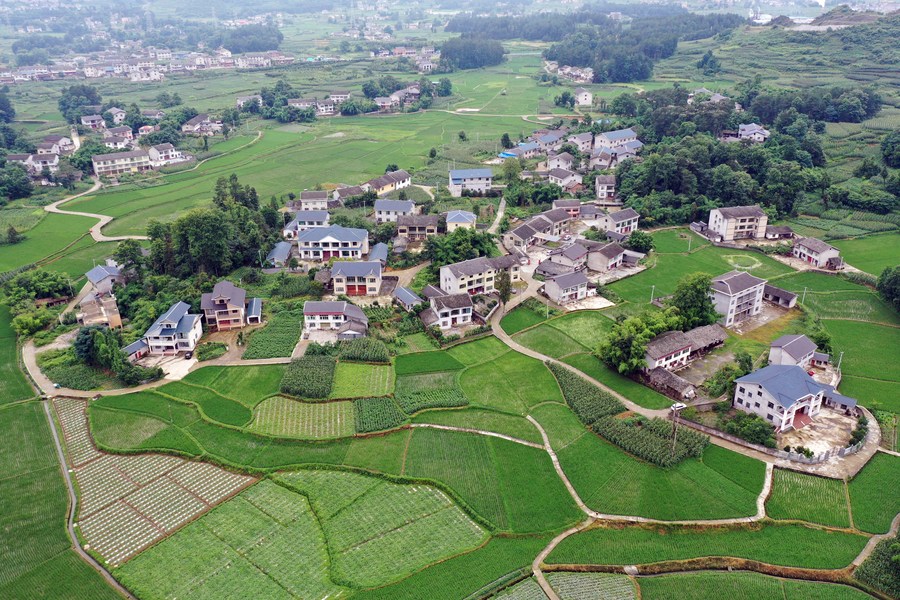
Editor's note: Decision Makers is a global platform for decision makers to share their insights on events shaping today's world. Li Xin is the Deputy Director-General of the International Poverty Reduction Center in China. The article reflects the author's opinions and not necessarily the views of CGTN.
Since China announced the success of its campaign to eradicate absolute poverty in rural areas under the current poverty standards, it has been questioned by many international media, including the AP, Reuters, AFP, VOA, BBC, the Washington Post and the Financial Times.
They often questioned China's poverty alleviation standards in the tone of experts, saying that China's poverty line is lower than the $1.90 absolute poverty standard of the World Bank (WB). The comments stem from patchy knowledge of China's poverty alleviation. How is China's poverty standard set, and is it low or not?
China is the world's largest developing country, with a population of 1.4 billion. In addition to its weak foundation and uneven development, the nation had long been plagued by poverty at a scale and a level of severity that has rarely been seen anywhere else in the world. As a result, challenging China almost defies imagination.
From a research perspective, a country's poverty standards are an important basis for identifying the poor, formulating poverty alleviation policies, allocating poverty alleviation resources, monitoring changes in poverty, and evaluating the poverty reduction effects of public policies and projects.
Developing countries generally set poverty lines based on their own national conditions and poverty status and the level of economic and social development. Meanwhile, the poverty benchmarks of the World Bank are based on the international comparison project (ICP) to evaluate poverty changes in various developing countries and made country-to-country comparisons.
Therefore, it established a poverty line based on purchasing power parity in U.S. dollars that can be compared between countries. Purchasing power parity is used to compare the living standards of different countries.
This poverty line is an income line that defines a "shopping basket" based on the purchasing power of each country. This shows that the WB's poverty standard is for international comparison, not for countries to carry out poverty alleviation work based on it.

An aerial view of Fenghua Town of Suiyang County, southwest China's Guizhou Province, July 1, 2020. /Xinhua
An aerial view of Fenghua Town of Suiyang County, southwest China's Guizhou Province, July 1, 2020. /Xinhua
China usually sets the national poverty standards according to the national economic, social development and the basic living needs of the poor since the implementation of large-scale, planned and organized poverty alleviation.
China first formulated the poverty alleviation standard in 1986. The standard was 206 Chinese yuan (currently about $31.82). The corresponding poverty population was 125 million. The main purpose was to solve the problem of food and clothing.
The second time was when the country's first 10-year rural poverty alleviation and development program was formulated in 2001. The standard was raised to 865 yuan (currently about $133.6), and the corresponding poverty population was about 94 million.
The third time was to formulate the country's second 10-year rural poverty alleviation and development program in 2011. The standard was raised again to 2,300 yuan (currently about $355.47), based on the 2010 constant price, corresponding to 122 million poor people.
Since the fight against poverty in 2012, the identification and withdrawal of the poor in China has been based on households, and the measurement standards are "one income line" and "two no worries and three guarantees." So, what does the standard stand for?
"One income line" refers to the fact that the annual per capita net income steadily exceeds the current national poverty alleviation standard, which is 2,300 yuan as mentioned above, while the current price is about 4,000 Chinese yuan by 2020.
"Two worry-frees and three guarantees" means to achieve stability without worrying about food, clothing, compulsory education, basic medical care and housing safety. In the specific implementation process, safe drinking water is also guaranteed.
The criterion for the withdrawal of the poor in China is a comprehensive multi-dimensional criterion, not only an income line but also the realization of the right to survive and develop.
On the whole, it is higher than the WB extreme poverty standard and higher than the absolute poverty line of the "2030 Agenda for Sustainable Development" set by the United Nations in 2015. It reflects China's actual economic and social development and the building of a moderately prosperous society in all respects.
According to statistics, by the end of 2020, the per capita net income of China's registered poor population reached 10,740 yuan (about $1,660), far exceeding the World Bank's extreme poverty standard (those living on less than $1.90 a day).
In the next step, we will continue to support the people who have been lifted out of poverty, ensure the steady and continuous growth of their income and move toward the goal of gradually achieving common prosperity for all people.
(If you want to contribute and have specific expertise, please contact us at opinions@cgtn.com.)

